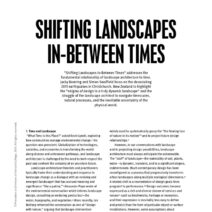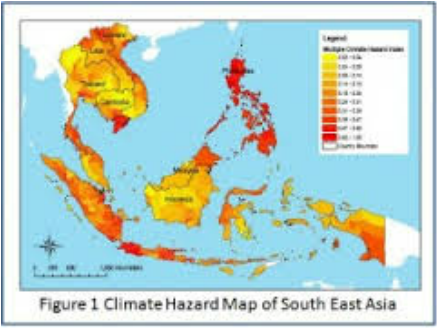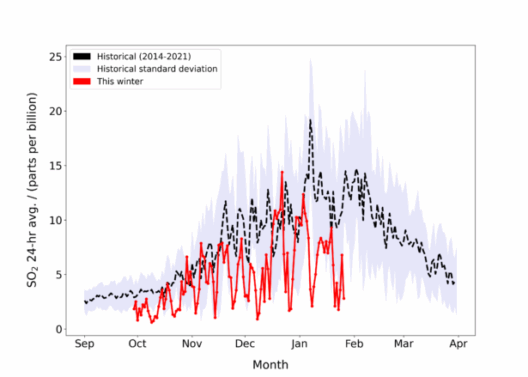The climate in Indonesia is a complex and multifaceted phenomenon shaped by its geographical positioning along the equator. This immense archipelago comprises over 17,000 islands, engulfing a vast area of diverse landscapes, from lush jungles to sprawling urban centers. The interplay of tropical weather patterns and geographic features plays a crucial role in defining Indonesia’s climatic conditions, primarily characterized by high humidity and distinct wet and dry seasons.
To fully grasp Indonesia’s climate, one must first consider its equatorial location. Situated between the Indian and Pacific Oceans, this region experiences a tropical rainforest climate. This climate is typified by warm temperatures throughout the year, with minimal variation. Average daily temperatures hover around 27 to 30 degrees Celsius (81 to 86 degrees Fahrenheit), providing a relatively stable thermal environment.
However, it is not merely the warmth that defines Indonesia’s climate. The islands are characterized by high levels of humidity, which frequently reach between 70% and 90%. This pervasive humidity can be attributed to the consistent evaporation of moisture from the surrounding oceans, as well as the substantial vegetation that thrives across the verdant landscapes. This condition can engender a sense of mugginess, creating a sensation sometimes described as a “warm blanket” enveloping those residing in the region.
As one delves deeper into Indonesia’s climatic intricacies, the phenomenon of monsoon winds emerges as a pivotal aspect. The two principal monsoon seasons delineate the annual climatic cycle. The northwest monsoon typically occurs from November to March, bringing about significant rainfalls. Conversely, the southeast monsoon dominates from May to September, leading to a comparatively drier period. However, the transitional months can be volatile, characterized by erratic weather patterns as the atmosphere maneuvers between these two systems.
The precipitation levels in Indonesia are astonishing. Some regions, particularly in Sumatra and the northern part of Borneo, receive upwards of 4,000 millimeters (157 inches) of rain annually. This abundance nurtures Indonesia’s breathtaking biodiversity but also poses challenges, including the risk of flooding and landslides, particularly during the height of the rainy season. The formidable tropical downpours can lead to sudden and intense flooding, occasionally devastating local communities and disrupting lives.
The influence of topography cannot be overstated when examining Indonesia’s climatic variations. The islands feature mountain ranges, dense forests, and coastal areas, which contribute to notable microclimates. For instance, areas shielded by mountains may experience significantly different weather patterns compared to the coastal regions. The orographic effect, coaxed by high elevations, leads to localized climate conditions that can vary dramatically even within short distances. In the highland regions, temperatures can drop, prompting cooler and drier conditions compared to the humid lowlands.
In urban areas like Jakarta, the effects of climate can be further exacerbated by human activity. Urban heat islands, large areas dominated by concrete and asphalt, often result in elevated temperatures and altered humidity levels. The proliferation of these urban environments has, in some instances, intensified the local climate, leading to acute heat stress for the populace and increased demand for energy resources.
The combination of Indonesia’s equatorial climate, high humidity, and monsoon patterns renders it particularly susceptible to climate change impacts. Rising temperatures, a consequence of global warming, are likely to exacerbate existing challenges. Increased frequency and intensity of extreme weather events, such as typhoons and floods, pose significant threats to the agricultural practices that much of the rural population relies on for sustenance.
Moreover, climate change has far-reaching implications for Indonesia’s ecosystems and biodiversity. The intricate balance maintained within tropical rainforests is jeopardized as rising sea levels erode coastal habitats and altered rainfall patterns disrupt ecosystems. Protecting these invaluable habitats is vital not just for their intrinsic worth but also for the myriad of species reliant on them for survival.
Amid these challenges, there exists a promise for change. Awareness and education about environmental issues, including climate change, are increasingly becoming a priority among Indonesia’s government and its citizens. Initiatives focusing on sustainable practices, reforestation, and climate-resilient infrastructure are being championed. Such efforts, when combined with global collaboration aimed at reducing greenhouse gas emissions, can pave the way for a more resilient Indonesia.
To truly appreciate the climate of Indonesia is to recognize its duality—an enchanting yet perilous coexistence of humidity, heat, and rainfall contrasted with the potential for catastrophic natural disasters. The experience of standing beneath a canopy of towering trees while torrential rains pour can evoke both awe and trepidation. It stirs curiosity and a sense of responsibility toward safeguarding this unique climate for future generations.
The exploration of Indonesia’s climate prompts us to re-evaluate our relationship with nature—understanding that changes in environmental patterns can ripple through economies, societies, and our very way of life. In light of this, embracing sustainable practices and fostering a holistic relationship with the environment becomes not just a necessity but an ethical imperative. The climate in Indonesia is a complex tapestry woven from threads of geographical wonder, cultural richness, and pressing challenges, inviting all to engage in its narrative.







